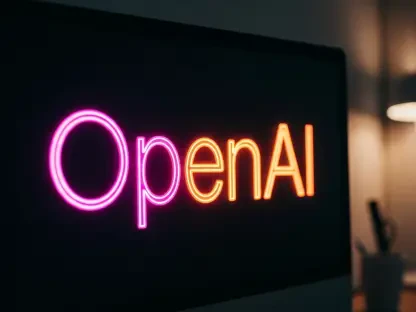What if a single video could resonate with millions across the globe, regardless of the language they speak? Picture a creator in a small town in Texas posting a reel that instantly connects with viewers in Madrid, Buenos Aires, and beyond—all without learning a word of Spanish. This is no longer a distant dream but a reality, thanks to Meta’s groundbreaking AI-powered voice translation feature. Launched globally on platforms like Facebook and Instagram, this tool is shattering linguistic barriers, empowering creators to amplify their reach like never before. Dive into how this innovation is transforming the digital content landscape.
Why Language Barriers Are a Creator’s Biggest Hurdle
In an era where social media unites billions, language remains a stubborn divide. With over 3.5 billion users on Meta’s platforms, the potential audience for any creator is staggering—yet most are confined to those who share their native tongue. This gap limits growth, stifles cultural exchange, and leaves countless stories unheard. The challenge is clear: how can creators bridge this divide without the time or resources to master multiple languages?
The significance of accessibility cannot be overstated. Studies reveal that content in a viewer’s native language boosts engagement by up to 75%, highlighting the untapped potential for creators who can transcend linguistic limits. Meta’s latest innovation steps in as a solution, promising to redefine how stories are shared and consumed on a global scale.
How AI Translation Is Revolutionizing Content Creation
Meta’s AI voice translation tool is not just a feature—it’s a paradigm shift. Designed for reels on both Facebook and Instagram, it allows creators to translate their audio content seamlessly, starting with English-to-Spanish and Spanish-to-English conversions. What sets this apart is the technology’s ability to preserve the creator’s unique voice tone, ensuring the translated content feels authentic rather than mechanical.
Beyond voice replication, an optional lip-sync feature aligns the dubbed audio with the speaker’s mouth movements, delivering a polished and natural viewing experience. Available to Facebook creators with over 1,000 followers and public Instagram accounts in supported regions, the tool is accessible via a simple “Translate your voice with Meta AI” toggle. Creators can preview translations, adjust settings, and post with confidence, knowing their message retains its personal touch.
Transparency is also prioritized. Viewers see a notice indicating that the content was translated by Meta AI, with options to disable translations in specific languages. This blend of innovation and user control marks a significant leap toward making social media a truly borderless space.
Voices From the Frontline: Insights and Impact
Industry leaders are already heralding the transformative power of this tool. Instagram head Adam Mosseri emphasized the mission behind the feature, stating, “Breaking down language barriers is key to helping creators grow their communities and maximize their impact on our platforms.” This vision aligns with a broader trend of AI personalization sweeping through social media, where accessibility drives deeper connections.
Early adopters have shared striking results. A creator from Barcelona reported a 120% surge in reel views after translating content into English, reaching an entirely new demographic overnight. Such feedback underscores the tool’s potential to unlock markets previously out of reach, offering tangible benefits for those willing to embrace the technology.
Analysts also see this as a turning point. Digital marketing expert Maria Lopez noted, “This isn’t just about translation—it’s about cultural resonance. When a creator’s voice feels familiar, even in a foreign language, it builds trust and loyalty.” These perspectives highlight the profound ripple effects on creator-audience dynamics.
Practical Tips for Creators to Leverage AI Translation
For creators eager to expand their global footprint, Meta’s tool offers a straightforward path. Start by enabling the “Translate your voice with Meta AI” option before posting a reel. Select the target language—currently limited to English or Spanish—and decide whether to include lip-syncing for a professional finish. Previewing the output ensures the translation matches the intended tone before it goes live.
Recording quality matters immensely. Meta advises facing the camera directly, speaking clearly, and avoiding background noise or overlapping voices, as the tool supports up to two speakers without interruption. These small adjustments can significantly enhance the accuracy and impact of the translated content.
To measure success, creators can utilize a new Insights panel metric that tracks views by language. This data reveals which markets are engaging most, guiding future content strategies. For those targeting unsupported languages, a manual option allows uploading up to 20 dubbed audio tracks via the Meta Business Suite, offering flexibility alongside automation.a
The Bigger Picture: Redefining Global Connectivity
This rollout reflects a deeper commitment to inclusivity in the digital realm. By equipping creators with tools to communicate across cultures, Meta is fostering a more interconnected online community. The current limitation to two languages is merely a starting point, with plans to expand support in the coming years, potentially covering dozens of dialects by 2027.
The implications extend beyond individual growth. As more creators adopt translation features, social media platforms could evolve into hubs of cross-cultural dialogue, where ideas and stories flow freely without linguistic constraints. This aligns with industry-wide efforts to harness AI for personalization and accessibility, setting a precedent for future innovations.
Looking back, Meta’s launch of AI-powered voice translation stood as a defining moment in social media history. It tackled a longstanding barrier with elegance and precision, empowering creators to share their voices far and wide. As the digital world continues to shrink, the challenge remains for creators to adapt and experiment with such tools, ensuring their content finds a home in every corner of the globe. The next step lies in embracing this technology, refining its use, and advocating for even broader language support to truly democratize storytelling.









